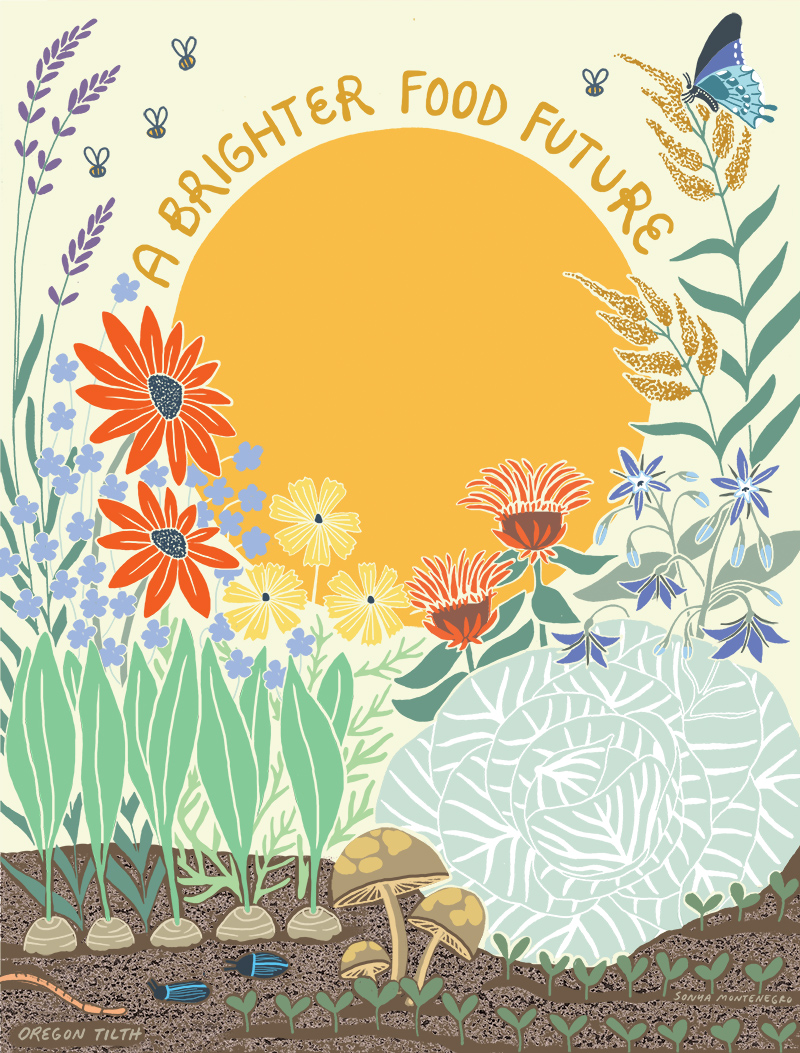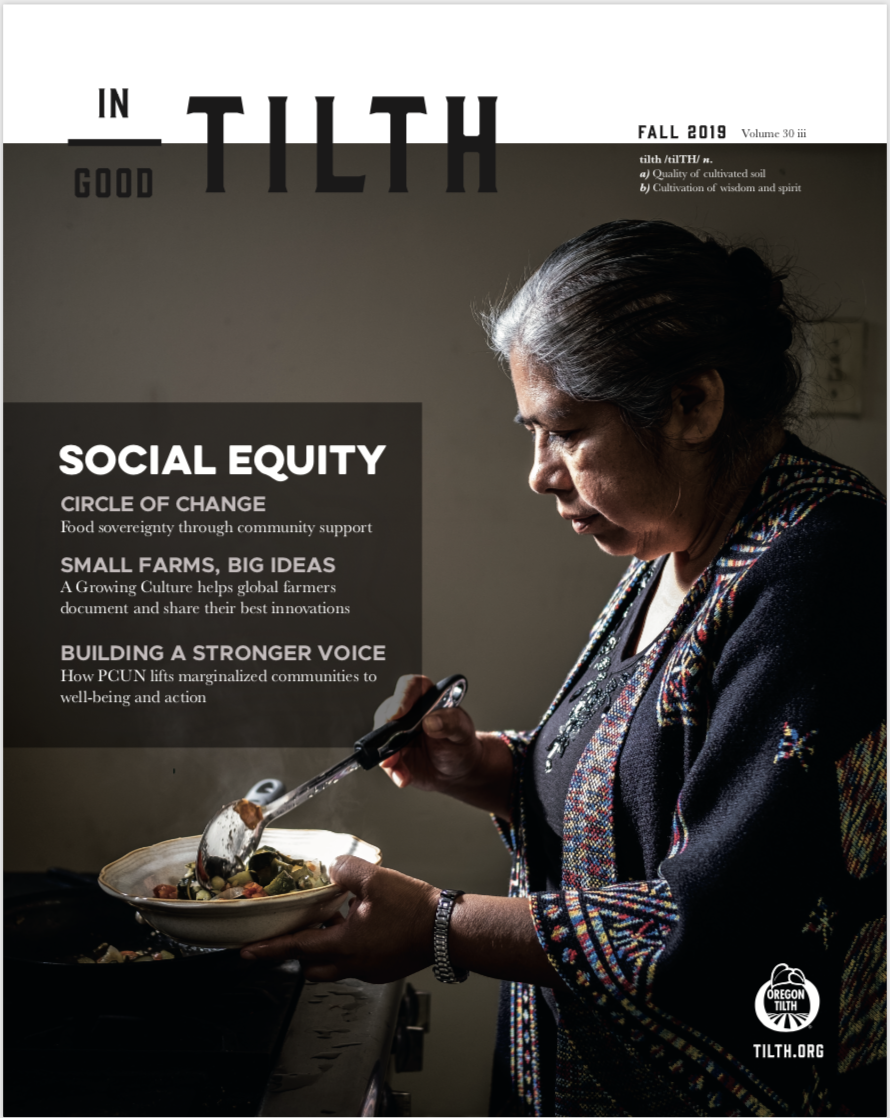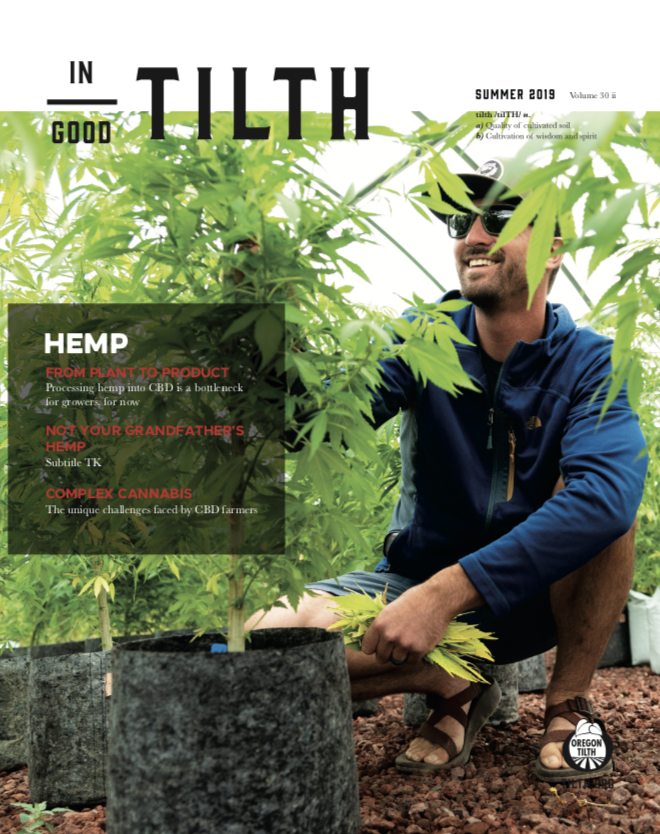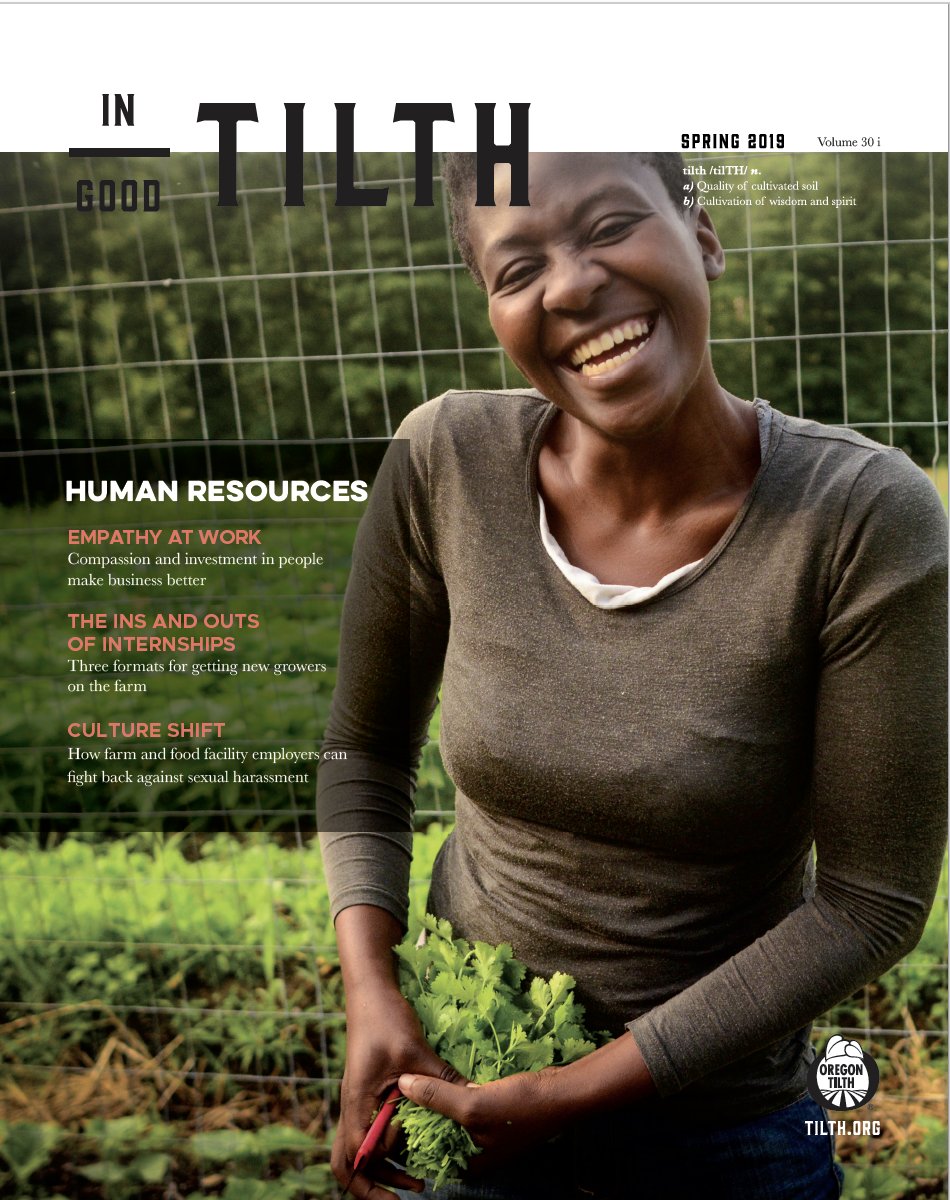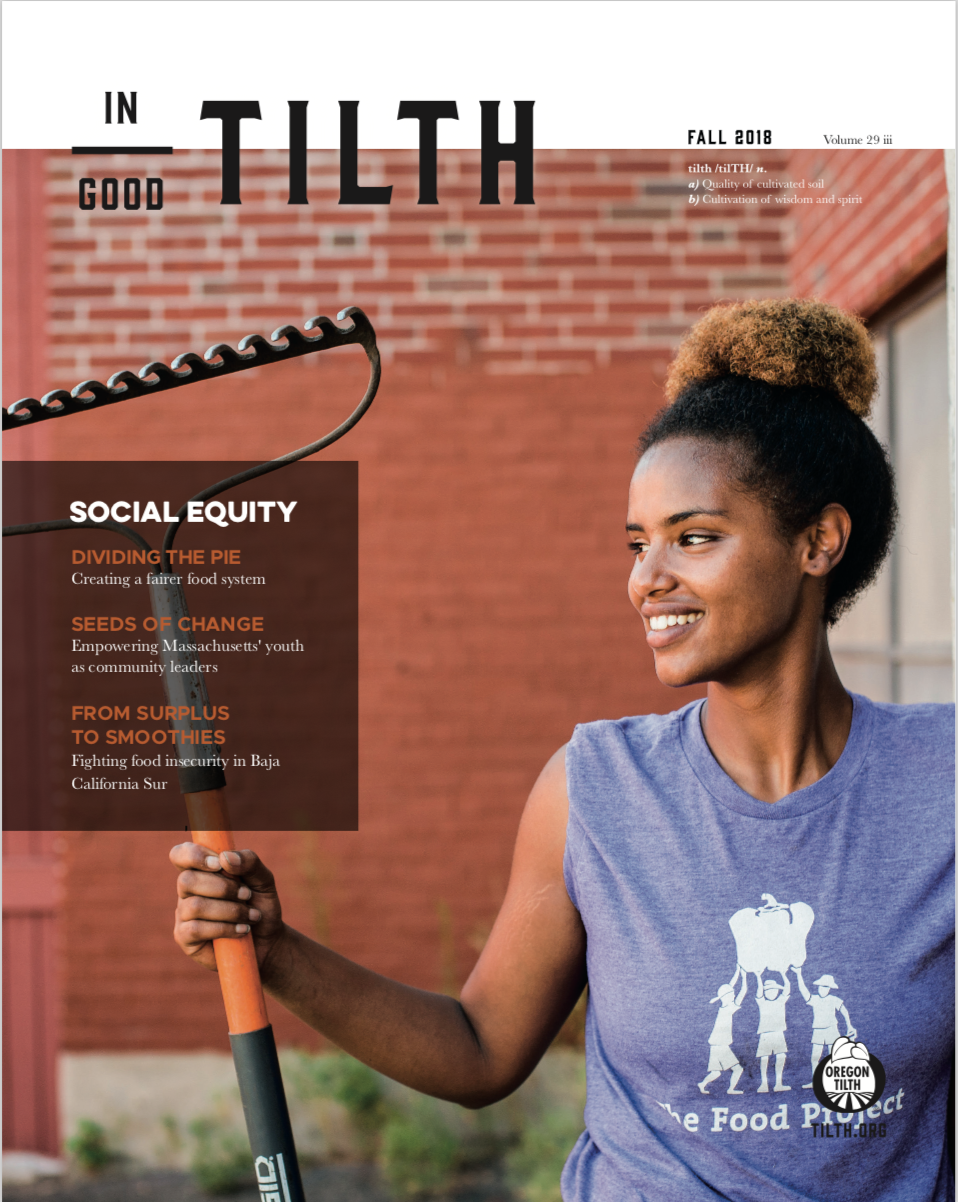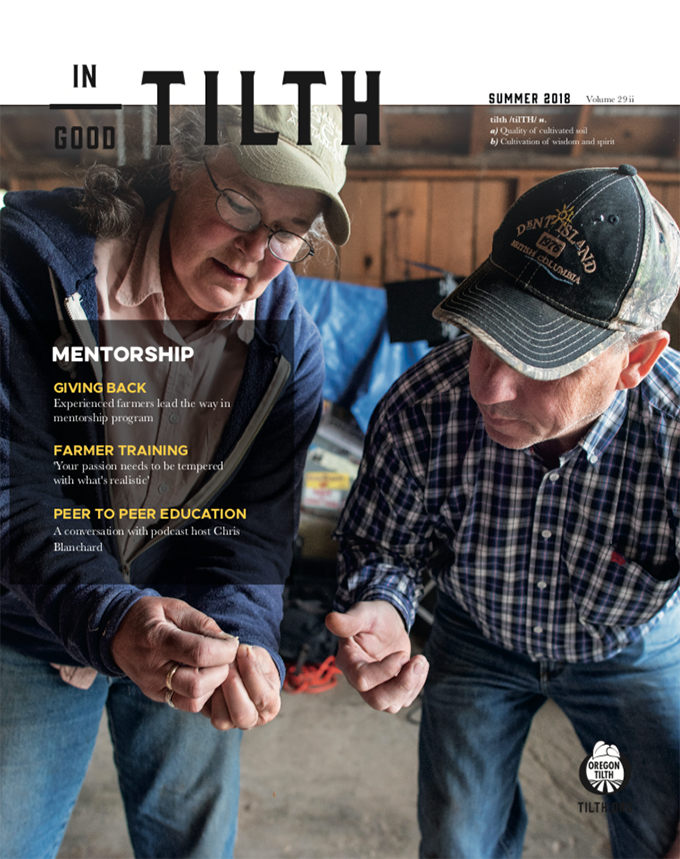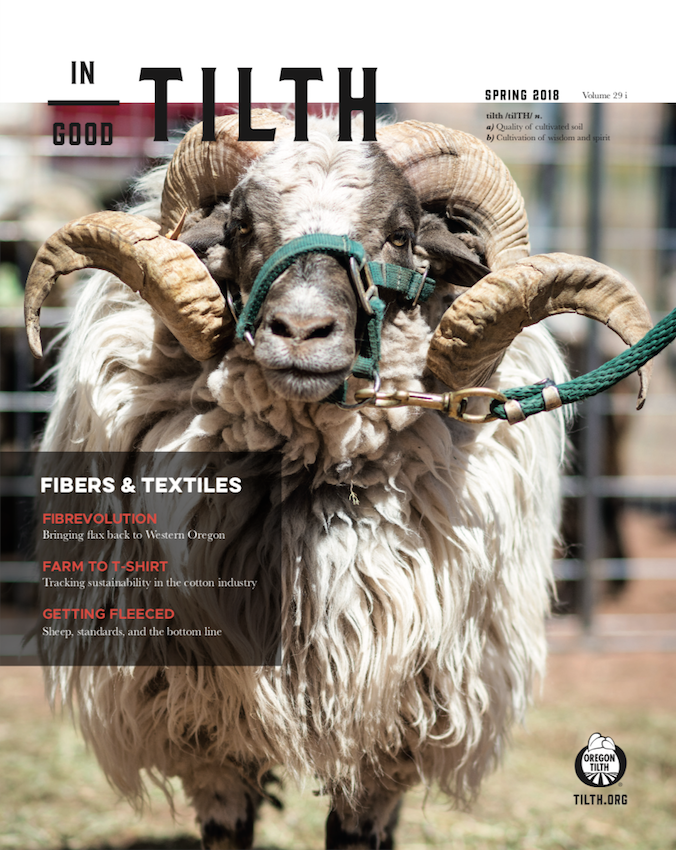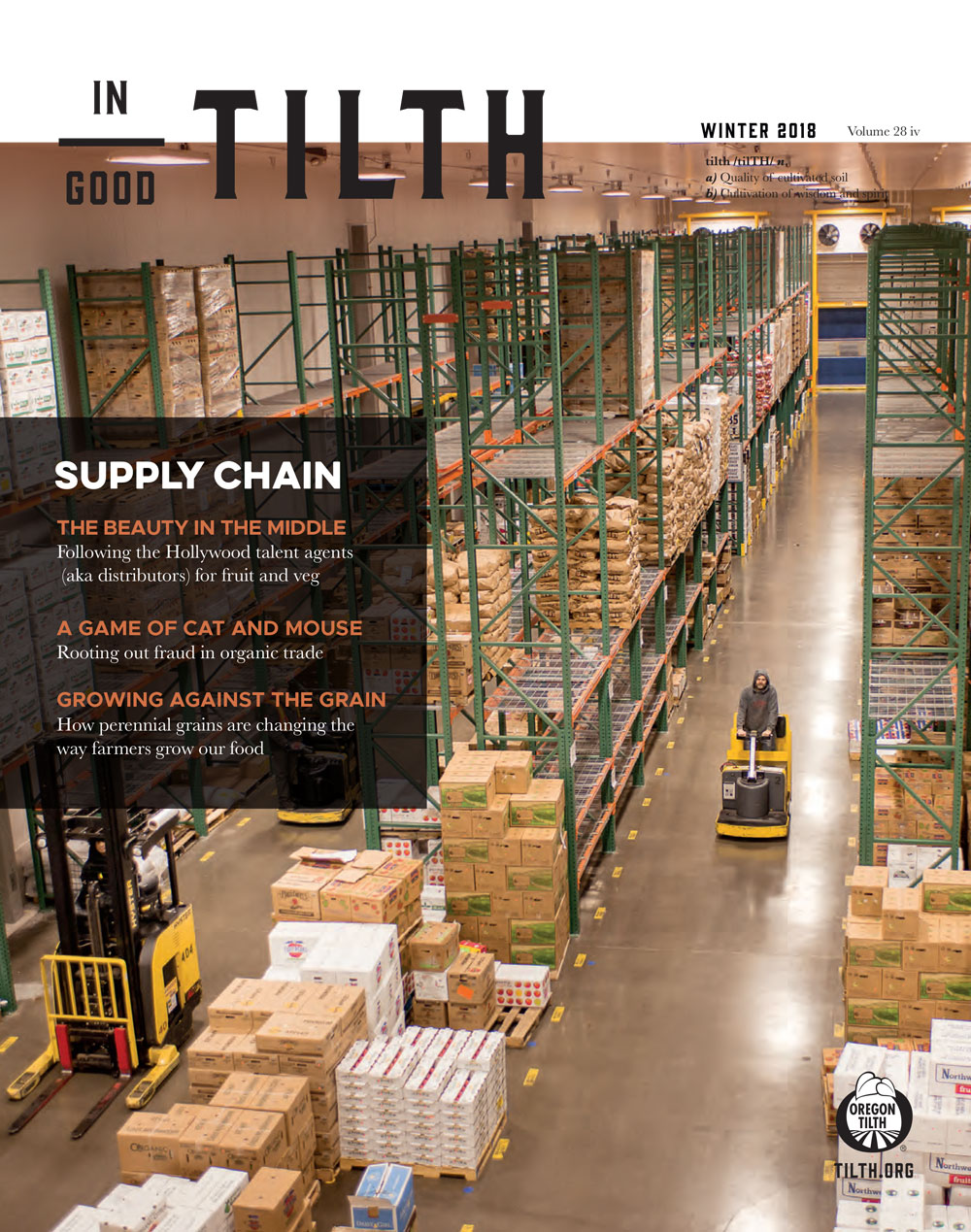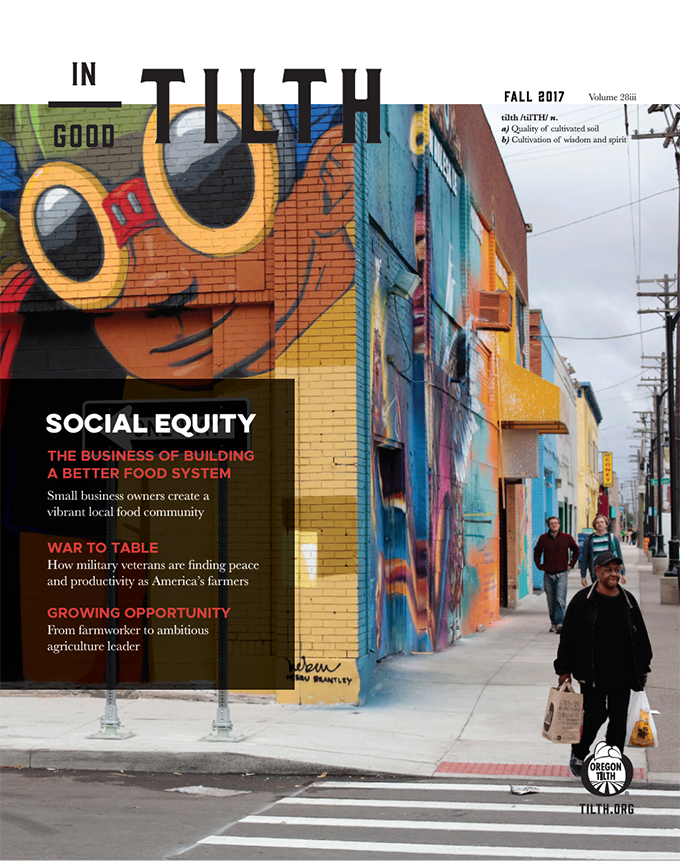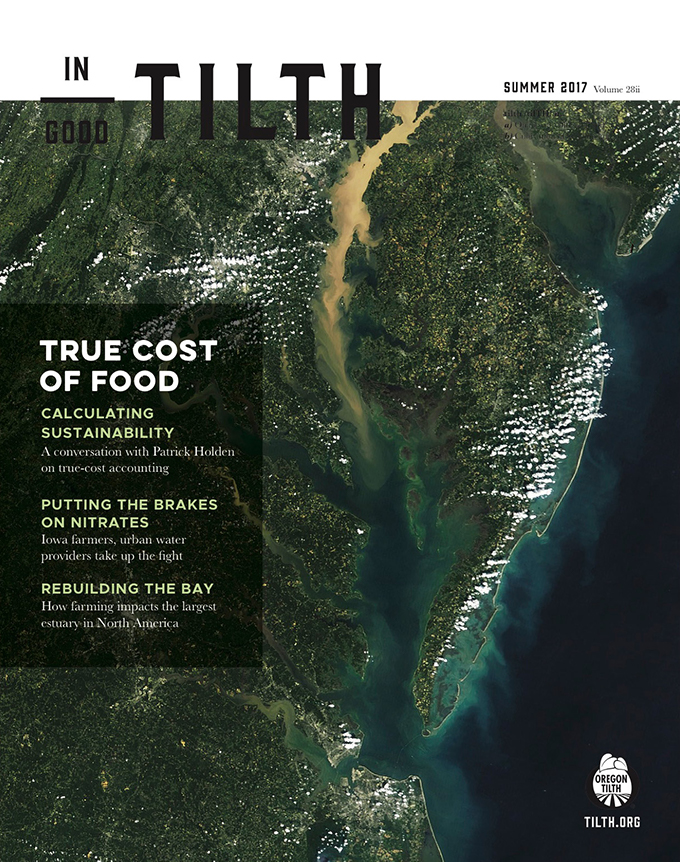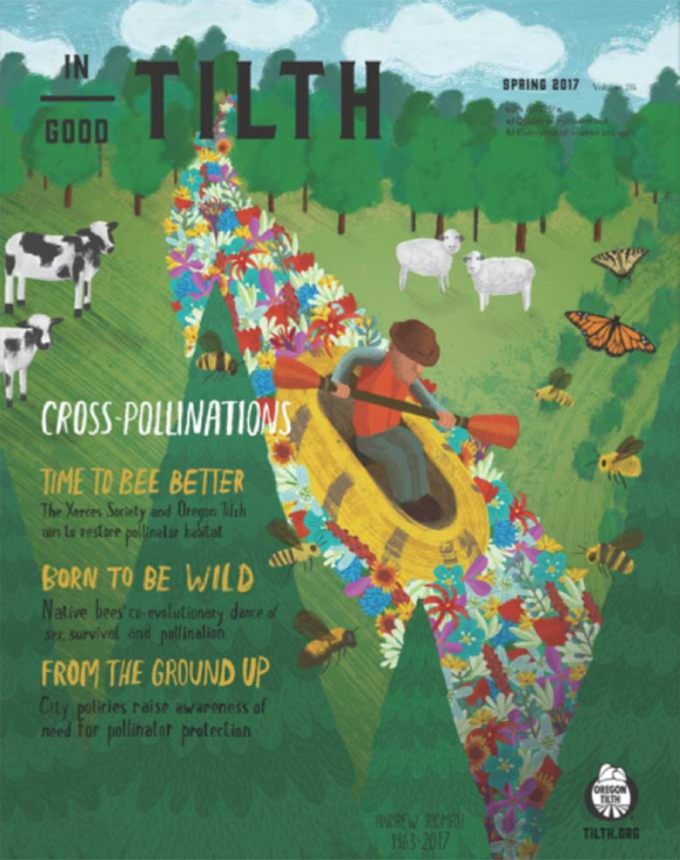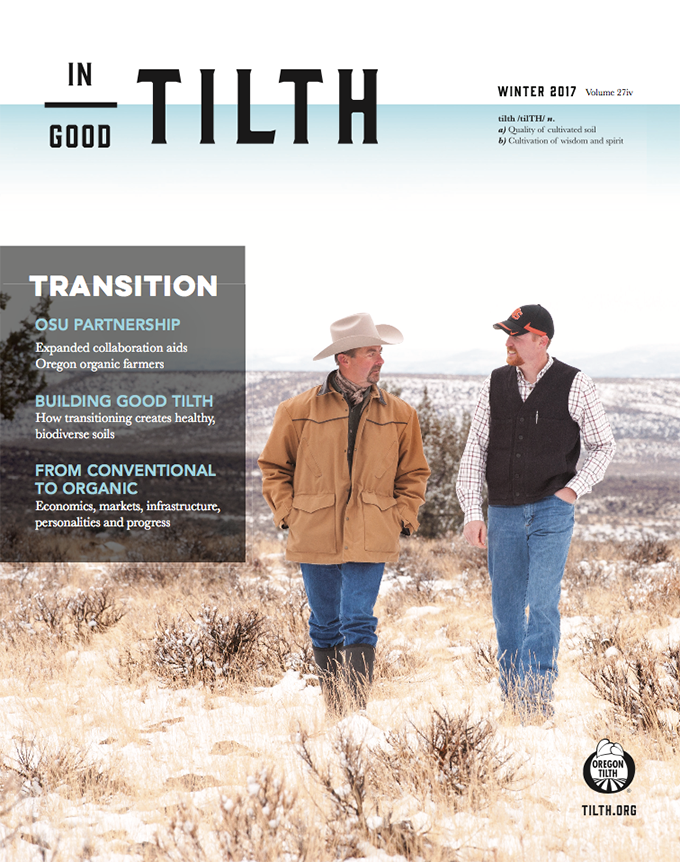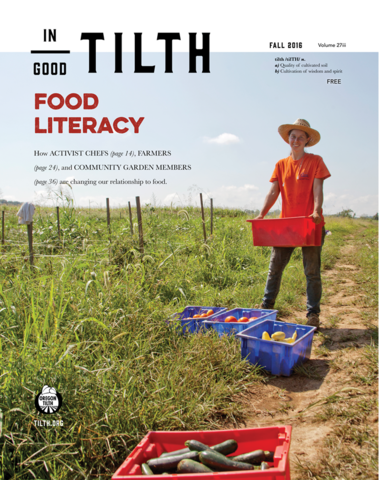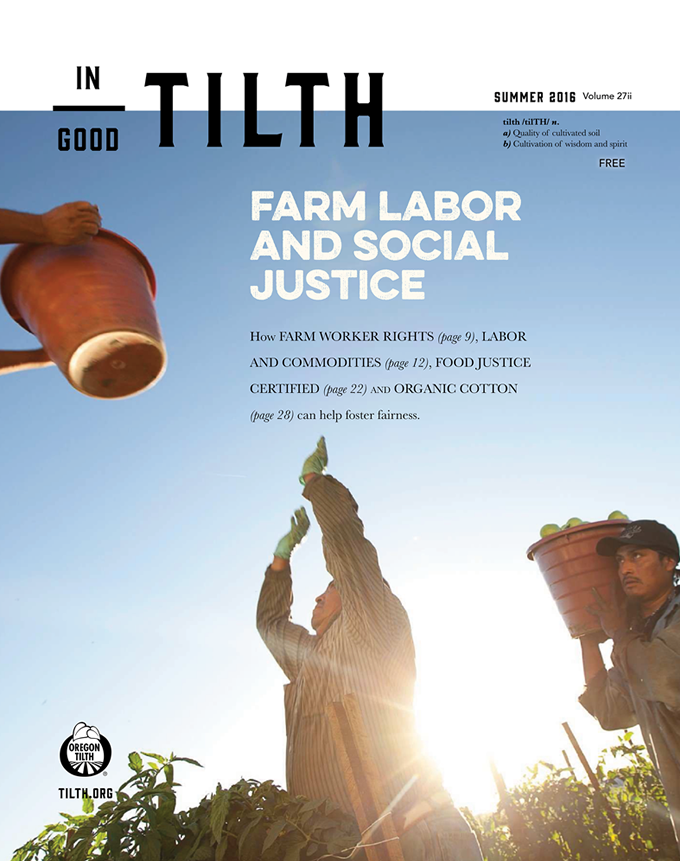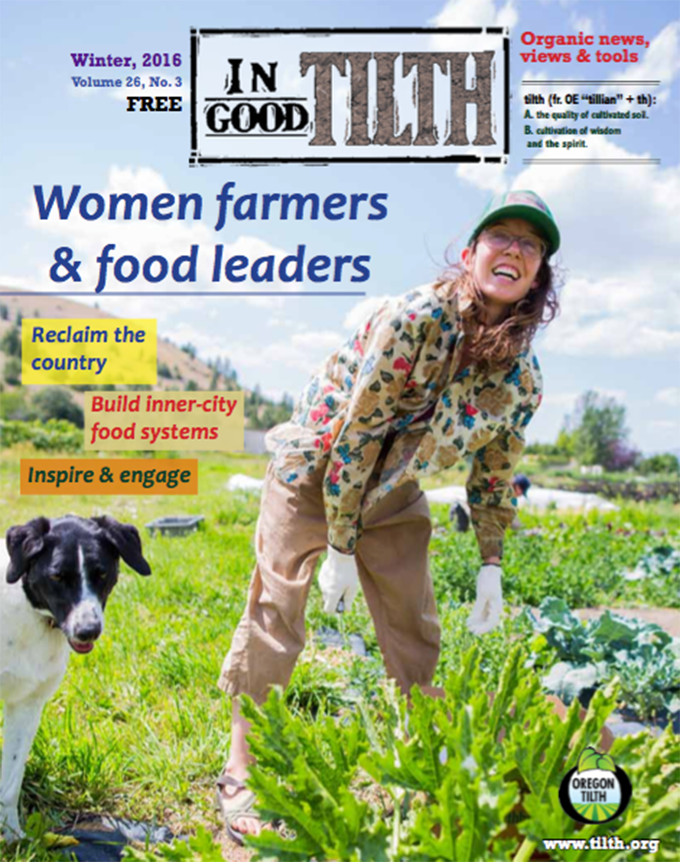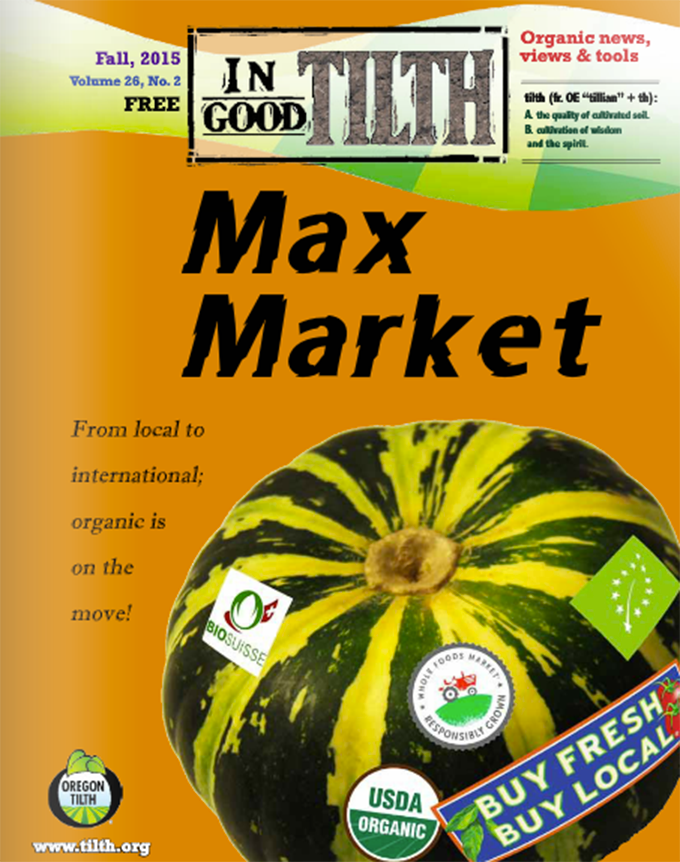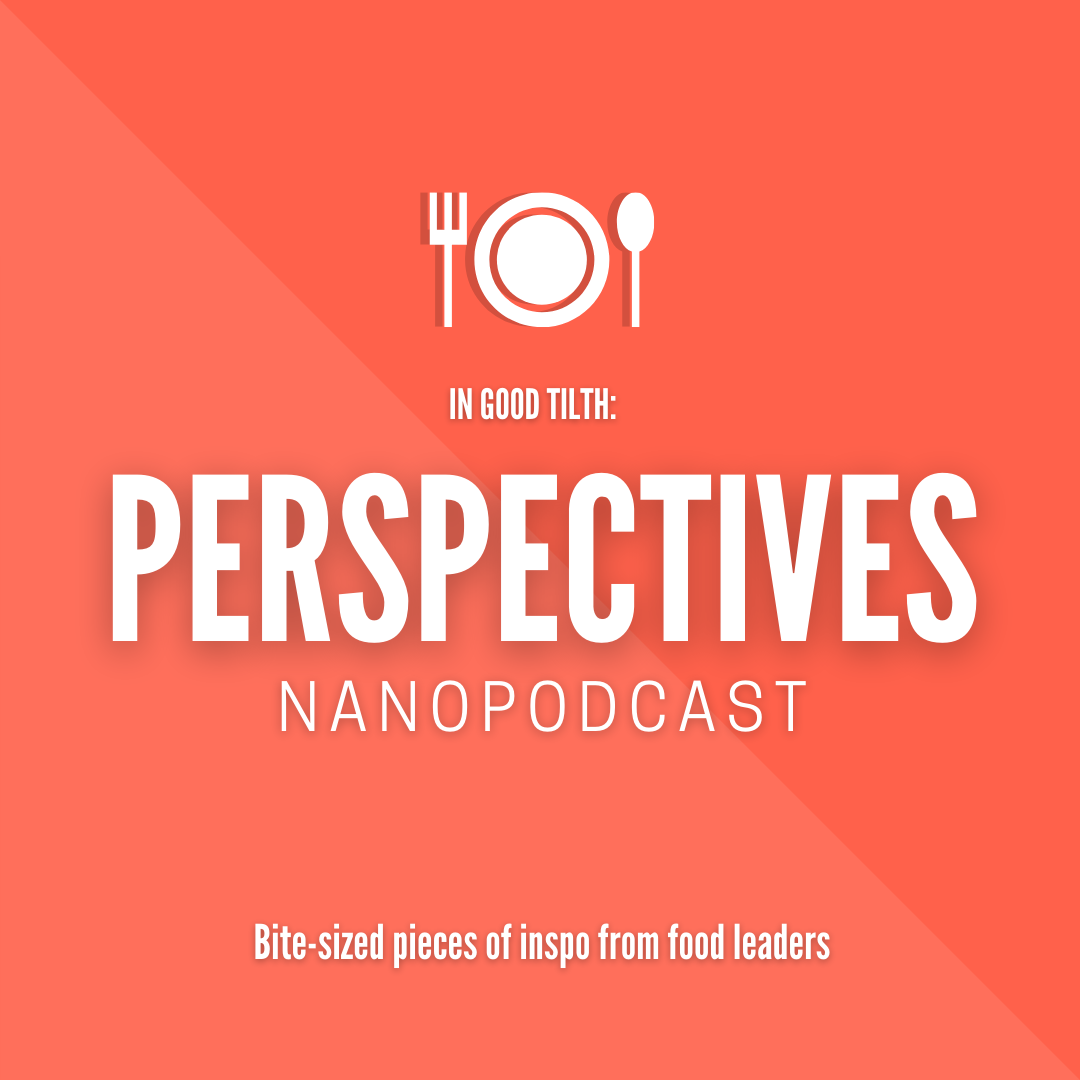Rolling hills, neatly trimmed hedges, magnificent old trees on lush pastures dotted with grazing sheep and cattle — the landscape around the village of Kingsclere, some 60 miles west of London, doesn’t just look like the picture on an old-fashioned cookie tin; it’s also the backdrop to Richard Adams’ rabbit saga, Watership Down. Tim May, who manages the 2,500 acre Kingsclere Estate, takes a more sober look at the land. His great-grandfather, a city solicitor from London, bought the farm in 1890 mainly as a hunting retreat.
By the 1950s, the family had acquired more arable land as well as pigs, dairy and chickens. But as the operation grew, it also became less integrated: first the cows were moved indoors, then the pigs. “We lost the rotational nature of grass,” said May. “And we replaced it with chemical fertilizer.” When changes in animal welfare laws in the 1980s meant that pigs needed to be given access to natural light, raising hogs no longer made financial sense. The meat price did not merit the cost of upgrading the housing, the pigs were sold off. The cows were next. In 2000, the farm still had a herd of 500 dairy cows. Two years later, they had all been sold and the Mays focused solely on arable crops. Half of the acreage was used to produce wheat, while the other half went in equal parts to oilseed rape and beans.
“We were doing minimum or no tillage and in theory it should have been great,” said May. “But we have chalky soil and a lot of flint; building up soil quality takes just so much longer. We were growing the business, but the costs kept going up too.”
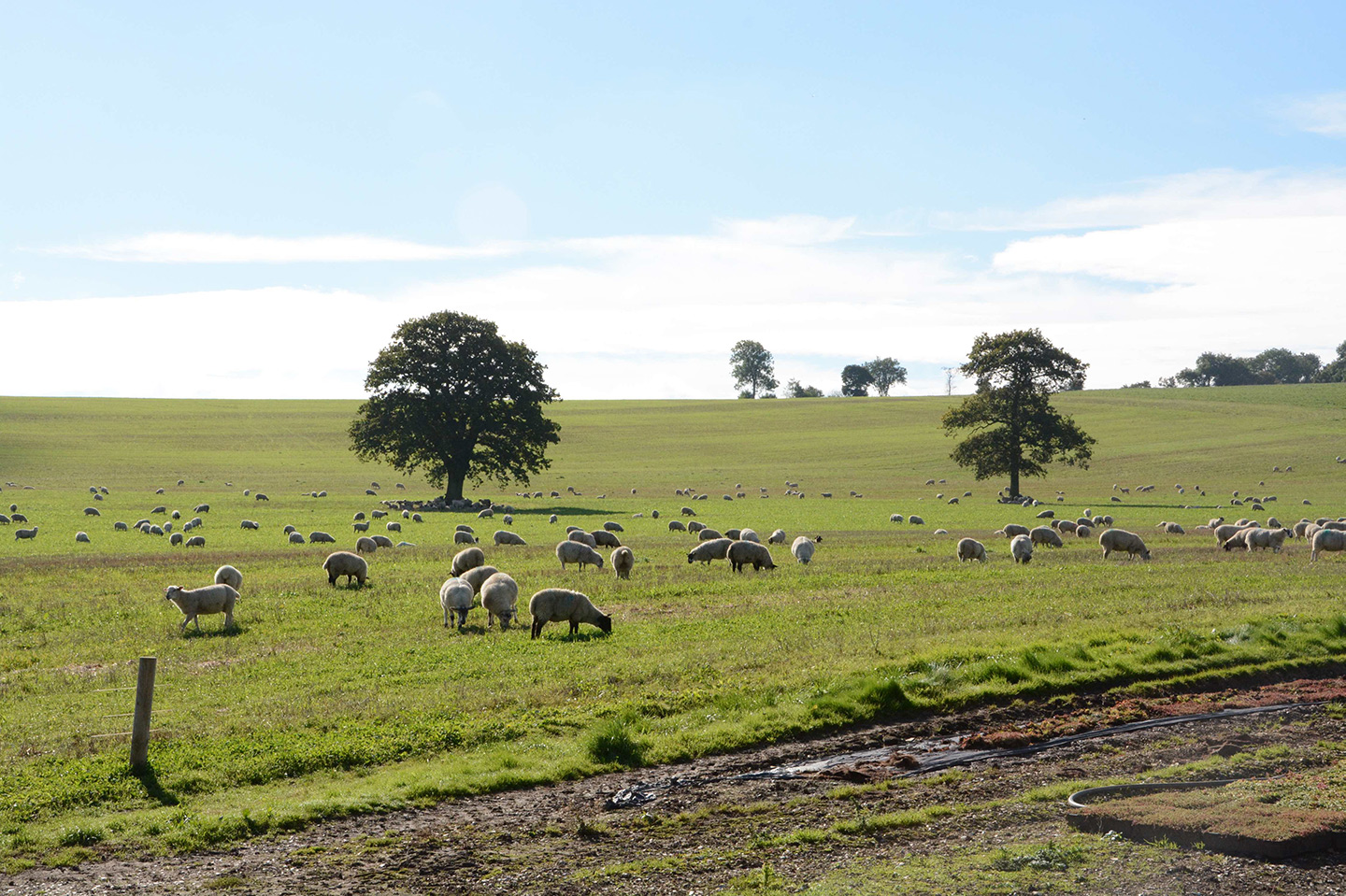
By then, sustainability had become the new buzz word, and as he was running the farm together with his father, May made time to reevaluate his farm. In 2011, he obtained a Nuffield Farming Scholarship, which gives recipients the chance to explore and investigate in depth a topic of their choice in the way they see fit. For May, it was all about sustainability. He visited farms in Brazil, Tanzania, Kenya and the United States.
He loved the advice and guidance available from some of the extension services in the United States (which don’t exist in Britain) and, as for farming sustainably, Joel Salatin’s approach and a tour of Polyface Farms left a big impression.
Back in the UK, it was the work done by two other Nuffield scholars that really changed his way of thinking — one had studied mob grazing, the other focused on carbon sequestering. It was during another walk across the fields with the agronomist who was telling him that things were getting better and “just a little more spraying and some additional fertilizer would fix things,” that May connected the dots. He said, “We were fixing the same problems over and over again. Why were we fighting this bad ground instead of just putting it into grass?” Grass needs cattle, and looking at the economic side, an organic dairy herd seemed the obvious answer.
The transition process on the Estate is happening in stages. The farm is divided into eight blocks of about 300 acres each. The first two went into conversion in May 2016, and another block will follow every year so that the whole 2,500 acres farm will be certified organic by 2023.
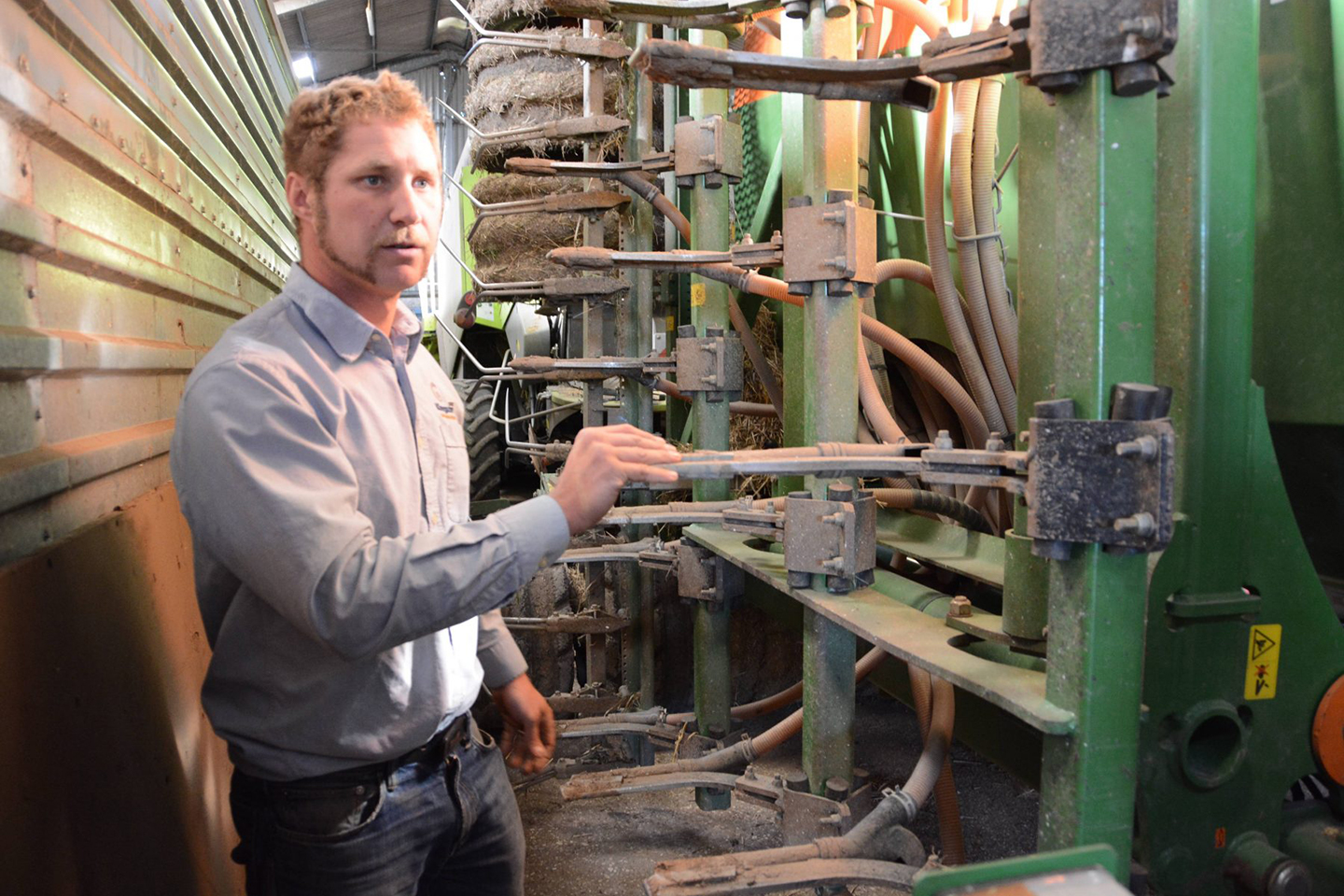
The certification is being done by Organic Farmers & Growers (OF&G), which now certifies more than half the organically farmed land in the UK. The organization developed out of a market cooperative set up in 1973 to promote organic produce and market access. In 1993, it became the first government-approved certifier for organic producers and processors.
Today there are over 2,000 OF&G certified farmers and processors says Steven Jacobs, the organization’s business development manager.
Organic agriculture in the UK certainly hasn’t been an uninterrupted success story. “The demand for organic has always been there, and between 2000-2006 we had 30 percent growth rates year after year,” said Jacobs. Farmers deciding to transition to organic could rely on (up to a point, free) advice from the Organic Conversion Information Service (OCIS) and money was available through the European Union’s Regional Development Fund and Environmental Stewardship funding programs.
Today, transitioning farmers find it very hard to get paid anything through these schemes, and OCIS is no longer funded in the UK, says Jacobs. Then came the global financial crisis. While organic sales held up on the European mainland, the market for organic in the UK crashed — not because people suddenly lost the taste for organic, but because supermarkets decided to delist a lot of organic produce.
Some organic farmers tried direct marketing and exporting, but a considerable number went back to conventional farming methods. It was only after one supermarket chain analyzed the data from store loyalty cards that it realized consumers regularly buying some organic produce had a shopping basket containing 2.7 times the value of those who never bought organic. So organic is back on the shelves and application numbers for organic certification at the OF&G are up.
Unfortunately, the overall acreage of organically managed has gone down. It’s seasoned organic farmers who are expanding or taking on a tenancy. That makes newcomers like May a particularly welcome sight.
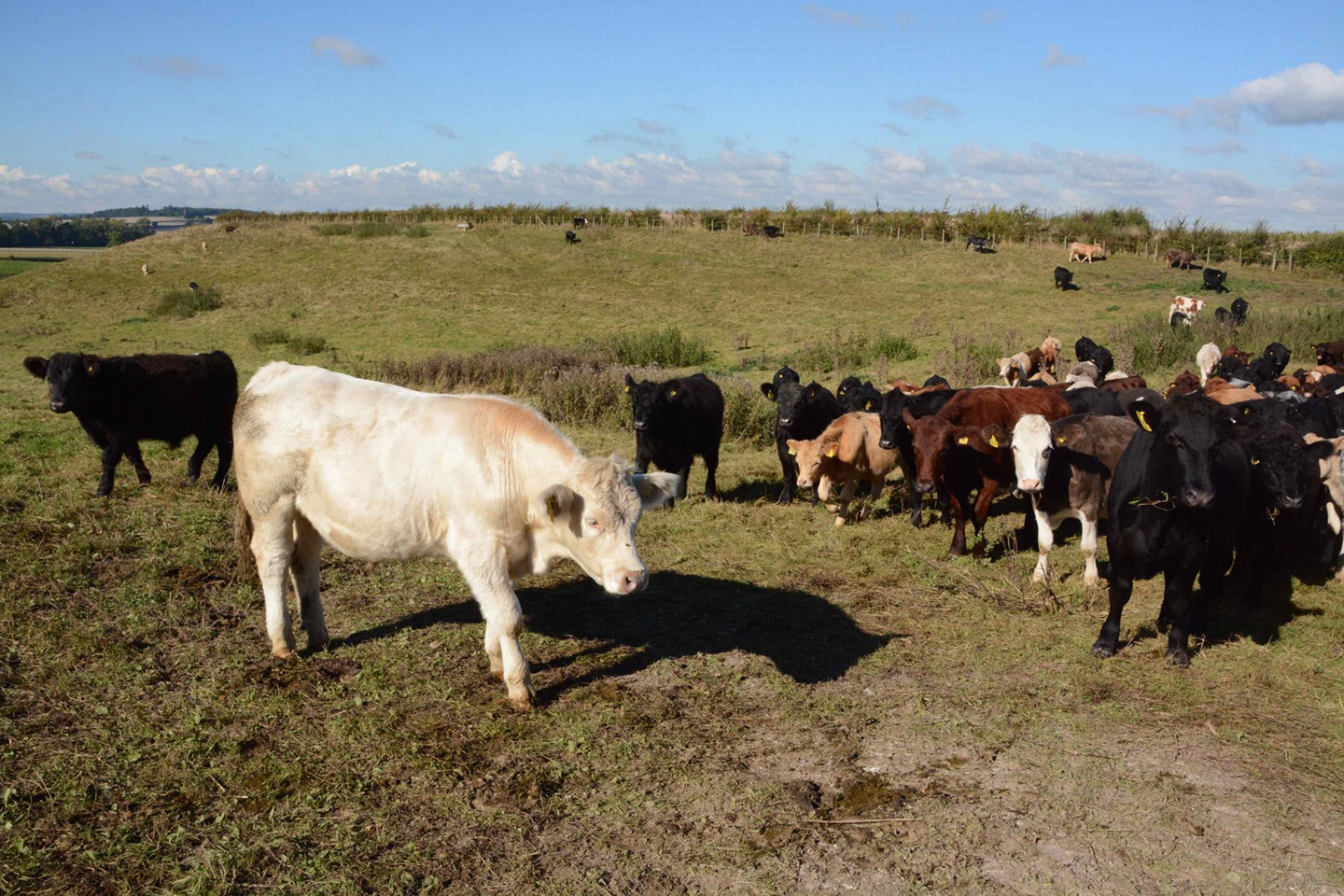
Today, Kingsclere Estate works with a four-year rotation. Half the land is under grass, and mixed herbs lays with chicory, fennel, rye, grass, timothy, yarrow and more. While we talk, May bends down, picks a few leaves and starts chewing them. “Some years ago I wouldn’t have been able to name half the plants that are growing here, now I’m tasting them and think they are amazing. Sometimes we feed our cattle better than ourselves.” Britain has ideal conditions for keeping livestock on grass. May explains that it’s not only their niche, but that’s why it makes economic sense. He’s convinced that going organic is the right thing to do, but acknowledges it’s also daunting. In part, this is why he opted for a phased transition. “I’ve got to learn so much,” he said. “About grass quality, getting the herbal lays right, mob grazing, herd management…” That’s why he makes sure to give himself time to learn and plenty of options. He bought 1,700 sheep from a retiring farmer and asked him to show him the ropes. His first organic dairy cows will arrive in 2017; he probably will go for about 250 Jersey crossbreds. For now, he experiments with cattle grazing the winter crop. If he gets it right, there will be less leaf disease and slug pressure in the spring, and the crop will be left to grow to maturity. If it goes wrong, he can reseed a spring crop. The 120 beef cattle are not his own, “I’m running a B&B here,” he said, “for finishing the animals that will go back to their owner.”
We meet the little herd on a hillside so steep that it’s always been a permanent pasture. As we arrive cows, calves and young bulls rush to the gate to see what’s going on and for a chance to get their ears scratched by May. “They are used to being moved regularly, and for me that’s the best way of checking on their health. I watch out for the last ones to go through, they are the ones who might have a problem.”
On another piece of land there are two mobile chicken coops with about 50 busy hens and a protective cockerel. They belong to Ben, a local carpenter who wants to start an egg business. On May’s land he has a chance to work out how to manage the hens, and if all goes well, May hopes that the mobile chicken houses will move onto the paddocks as soon as the cows are done with grazing. Joel Salatin’s pasture management ideas make sense on the other side of the Atlantic too.
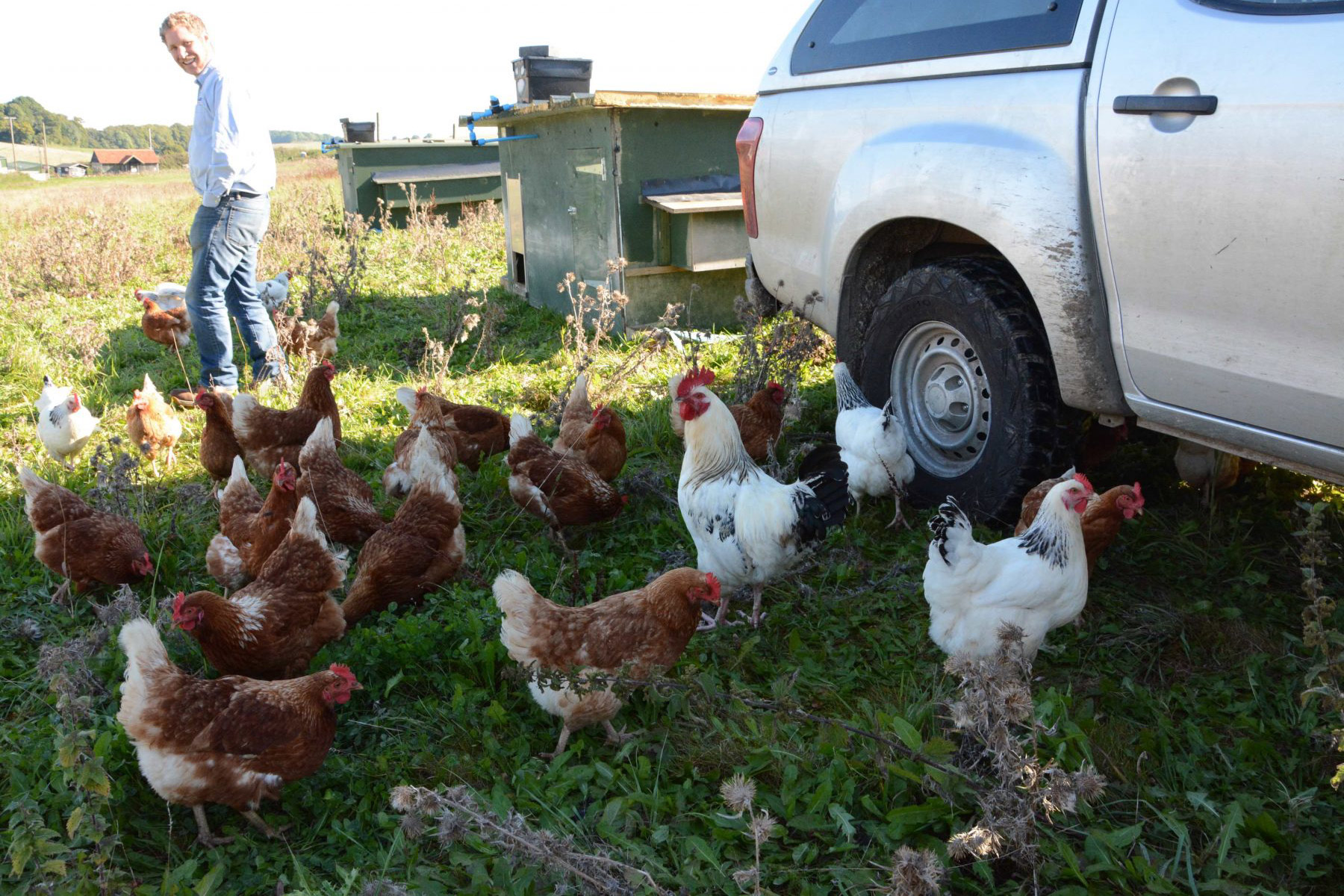
May likes the concept of share farming, where he provides opportunity for others to build a business. This approach brings and keeps jobs and money in the local economy and reduces the financial risks he has to take. He’s got a lot of ideas, keeps in regular touch with other organic farmers and is starting to think how the arable side of the business might work. There is no money in wheat, he said, but there is a real demand for organic spelt and naked barley.
People need to understand the whole systems approach, the benefits of organic for soil and water, for our health and for the environment.
Aided by the network of Nuffield scholars, May has built up. However, organic farmers in transition could use a lot more help, said Jacobs from OF&G. Currently, only scientists at Newcastle University pay special attention to organic. There is also the Organic Research Centre and of course, dedicated organic farmers willing to share their knowledge and experience. As a certifier, OF&G cannot give guidance, but tries to point transitioning farmers to where help is available. Field staff can advise certified farms on what solutions to problems are available under organic management rules. “What we lack is support for organic by the government,” said Jacobs. Not very surprising in a country where consecutive farming ministers have called for the EU to end the ban on growing GM crops and the moratorium on neonicotinoids, while lobbying hard for a more export oriented agriculture.
For Jacobs, organic certification is all about maintaining trust and integrity while still being accessible to farmers. Group certification for small growers is one option that’s being looked at, as are attempts to build up a stronger network of growers and processors — like the 70 or so organic arable farmers who supply exclusively to one organic mill that can tell its customers exactly where their flour comes from.
For May, it’s a good few months yet until he can start producing organic milk, but he says he already is a much happier farmer. He’s glad to not be out spraying anymore as soon as the sun is out. Instead, he has more quiet time to study, learn and work out sustainable solutions.

